Tax dollars made this enticing native plant habitat. Why can’t we get inside?
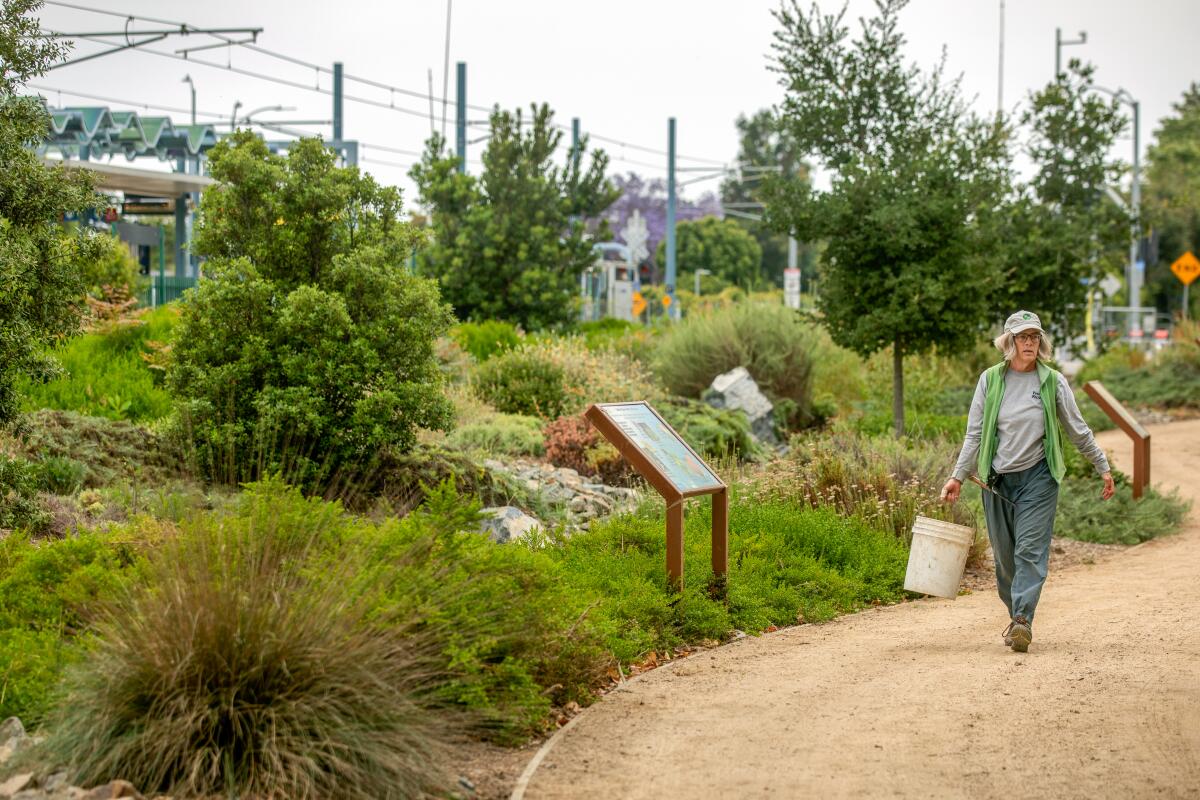
- Share via
Welcome to the first issue of the L.A. Times Plants newsletter, with a list of this month’s plant-related activities and upcoming events.
But first, today’s lesson in Los Angeles’ changing landscapes is a modern-day parable about the joys and challenges of creating native habitats on public lands.
Case in point: The lovely and puzzling Westwood Greenway. When completed in October 2020, it was an oasis of burbling streams and fragrant native plants along a wide, curvy trail between Overland Avenue and Westwood Boulevard next to Metro’s E (formerly Expo) line.
The project was a triumph for the Rancho Park community members who lobbied hard against early plans to build a 170-space parking lot on the site to serve Metro riders. They envisioned an inviting green space for the neighborhood and an eco-friendly showcase for turning unused nuggets of city land into lush native plant habitats for birds, pollinators and other local critters.
Sign up for our L.A. Times Plants newsletter
At the start of each month, get a roundup of upcoming plant-related activities and events in Southern California, along with links to tips and articles you may have missed.
You may occasionally receive promotional content from the Los Angeles Times.
Except for people, as it turns out.
Nearly three years later, Westwood Greenway is still behind a locked gate and rarely open to the public except during volunteer work sessions to keep it weeded (city maintenance has been spotty) and free guided tours on the third Sunday of every month and by appointment.
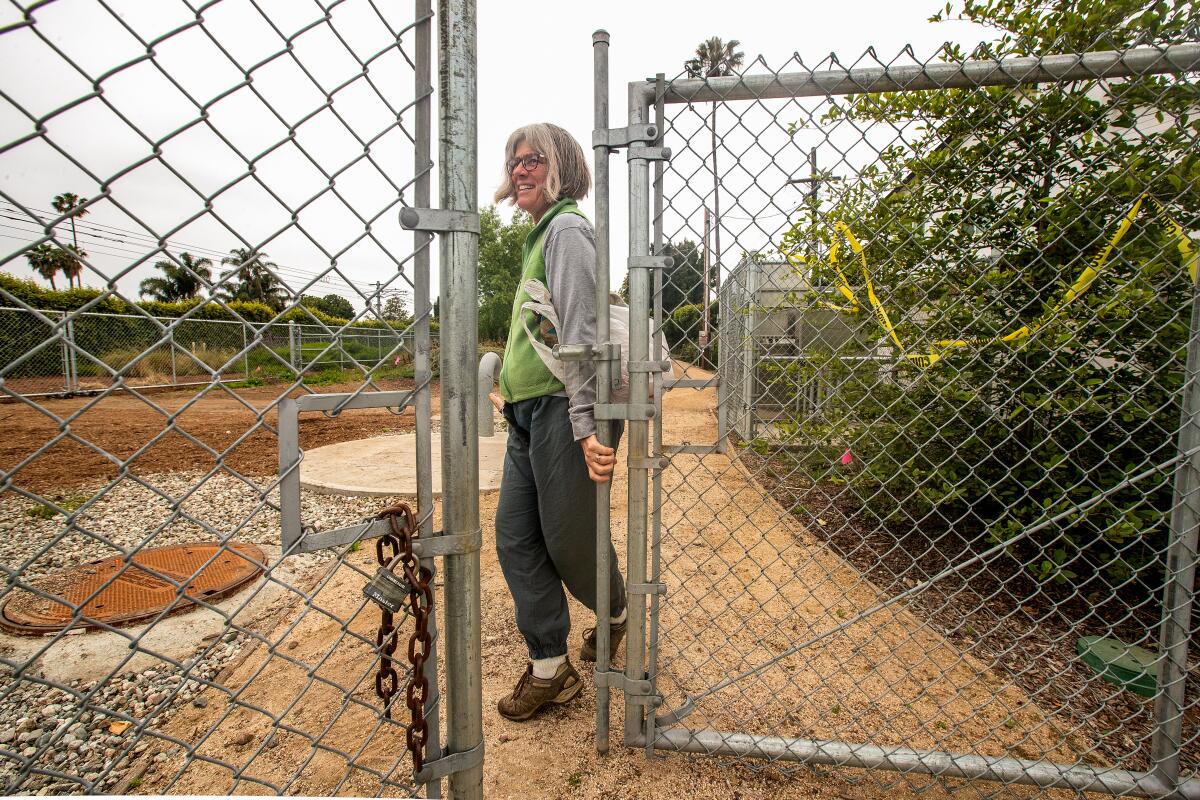
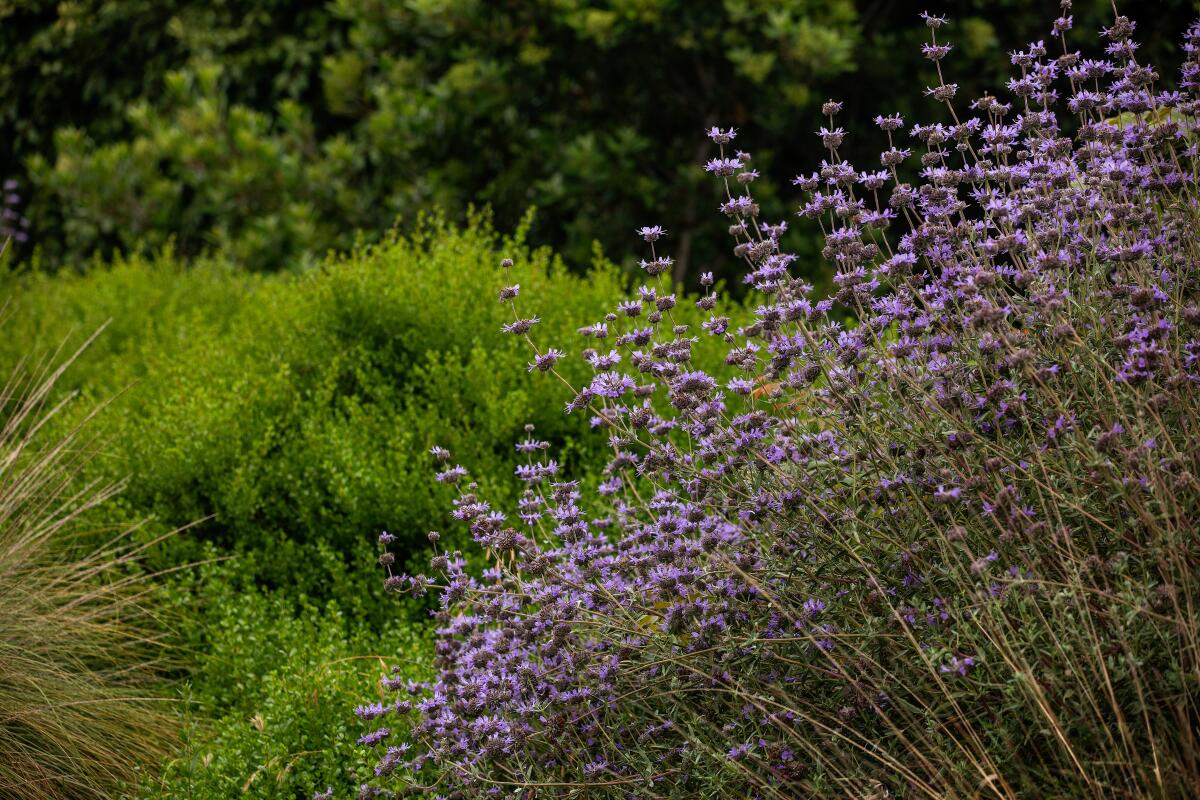
See, the greenway was funded as a stormwater capture project, using city and state water improvement funds. The burbling brook was designed to capture water running through neighborhood gutters, collecting road dirt, dog urine and who knows what else, and clean it by exposing the water to sunlight and filtering it through native plants like cattails before it returns to the storm drains and, eventually, the Santa Monica Bay.
Those funds also called for adding native trees and plants along the third-of-a-mile stretch between Westwood and Overland “to help educate the public about sustainability,” according to a statement from the city, and a wide, curvy “trail” actually designed to be an access road for maintenance vehicles.
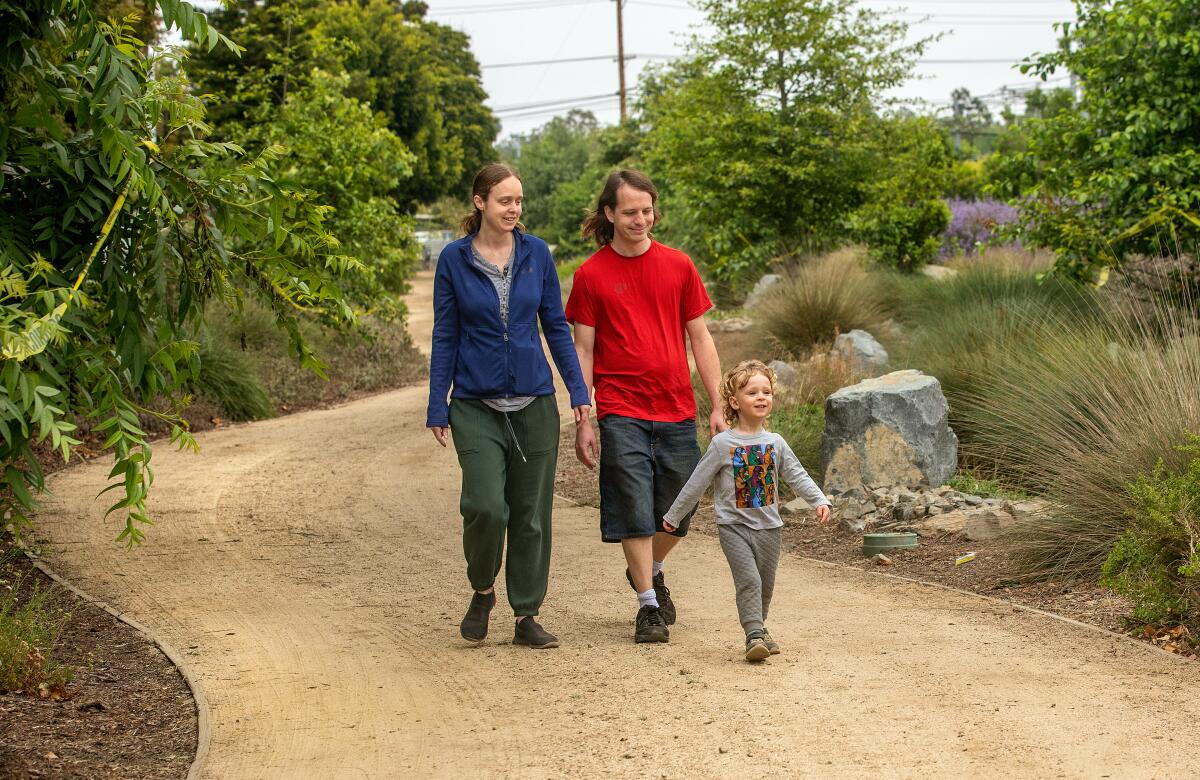
The city has done many stormwater capture projects as part of its quest to clean and reclaim water, but few of them include a native plant/habitat component, said Ida Meisami-Fard, senior civil engineer for the L.A. Sanitation and Environment Department.
And therein lies the rub: This serene, fragrant site requires regular care to keep weeds from overrunning the native plants, a job managed mainly by the community volunteers who lobbied for its creation, a nonprofit group called Westwood Greenway Inc., said President Annette Mercer.
This year, however, the cattails in the stream grew so tall and thick that they impeded the stream flow, making it run over its banks during this winter’s heavy rains. So the city finally came in to fix the problem.
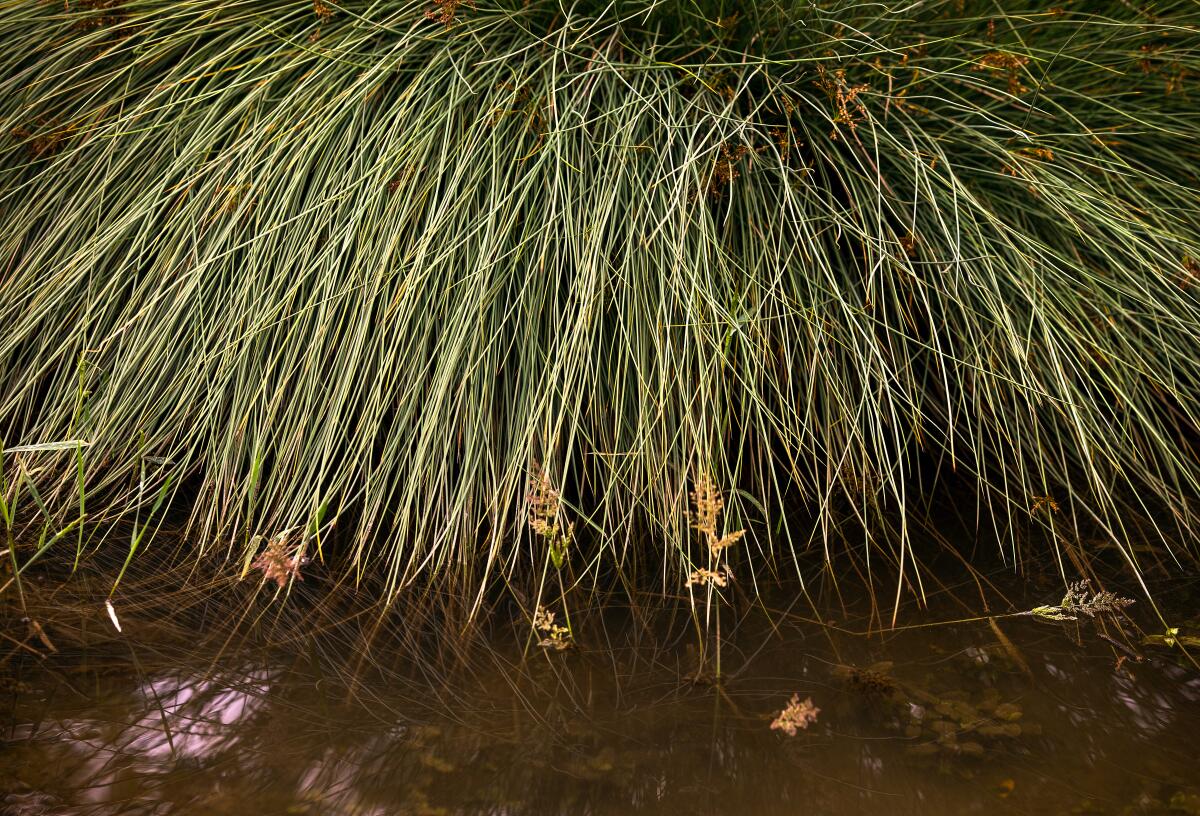

Habitats are supposed to be a little wild, with sprawling shrubs and leaf litter on the ground, creating a natural mulch, shelter, food and nesting materials. But when the city landscaping crew came in early May to dredge out the cattails in the stream, they damaged some native plants with their machinery. And to the volunteers’ consternation, they tidied up the site like a traditional no-leaf-left-behind landscape.
“It was extremely upsetting that even after asking that the native plants not be ‘neat and tidy’ and the native trees not be pruned (it is the wrong time of year), many plants that were not in the creek and not in the way of equipment were mowed, damaged or removed,” Mercer wrote in a May 16 letter to L.A. Sanitation and Councilwoman Katy Yaroslavsky.
“There was no reason for the clearing, and it disturbs the native bees, the soil invertebrates and all the other animals that use the area for habitat. It is the opposite of the habitat restoration aesthetic being promoted,” Mercer added.
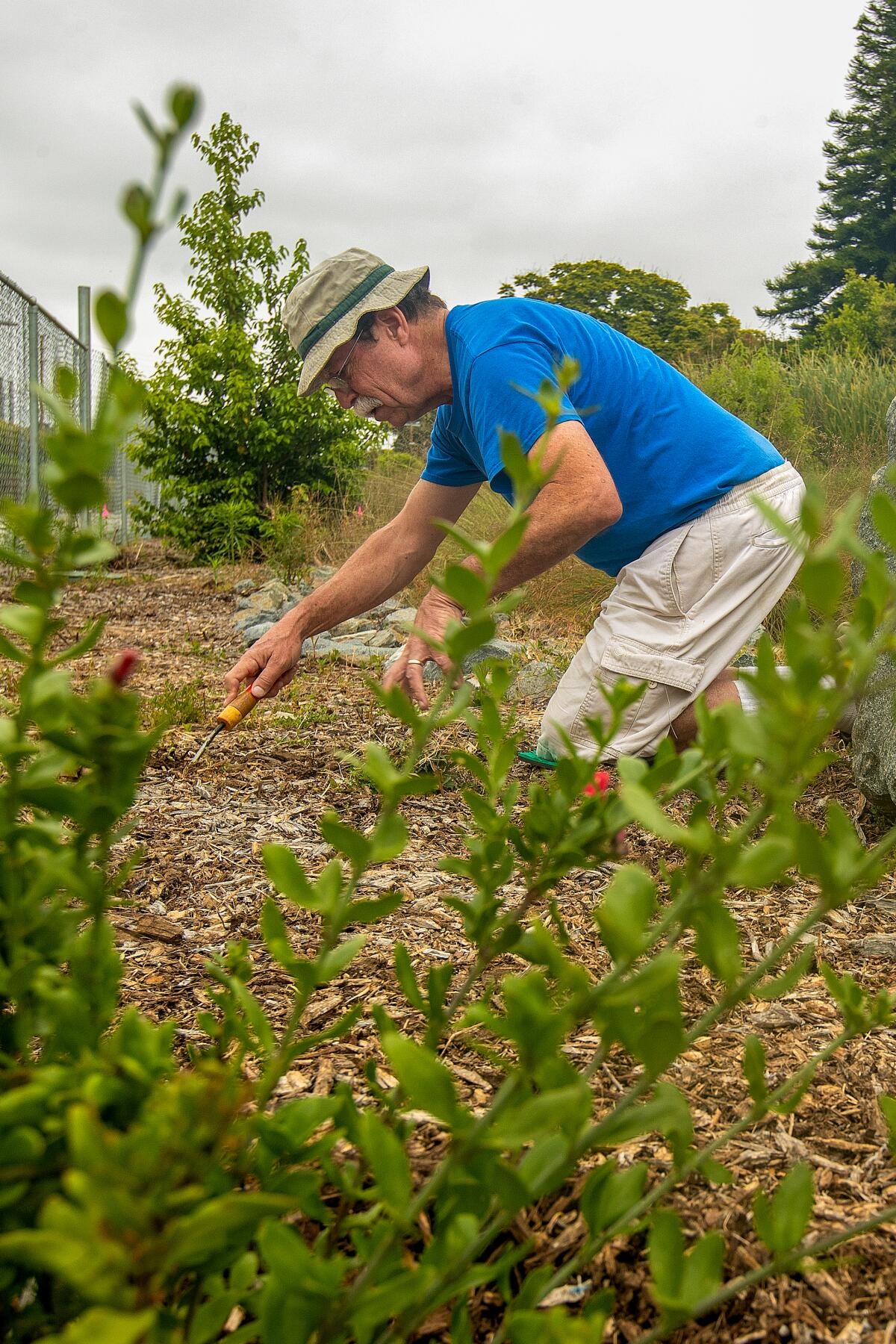
The results of her letter were somewhat gratifying, Mercer said. Representatives from L.A. Sanitation and Yaroslavsky’s Council District 5 office met with board members shortly after. Meisami-Fard confirmed that the city has chosen a regular maintenance crew for the site with expertise in California native plants and is negotiating a start date for sometime in late summer or early fall.
Leo Daube, Yaroslavsky’s communications director, said that beginning July 1, the new city budget includes money to install fencing and gates that can be easily opened and closed for public access and maintenance.
He and Meisami-Fard said it likely will take six to nine months to draw up plans for creating that public access and to address other questions, like who will open and close those gates each day and whether the site will include a port-a-potty and even garbage cans (the can previously at the site was removed after it was set on fire).
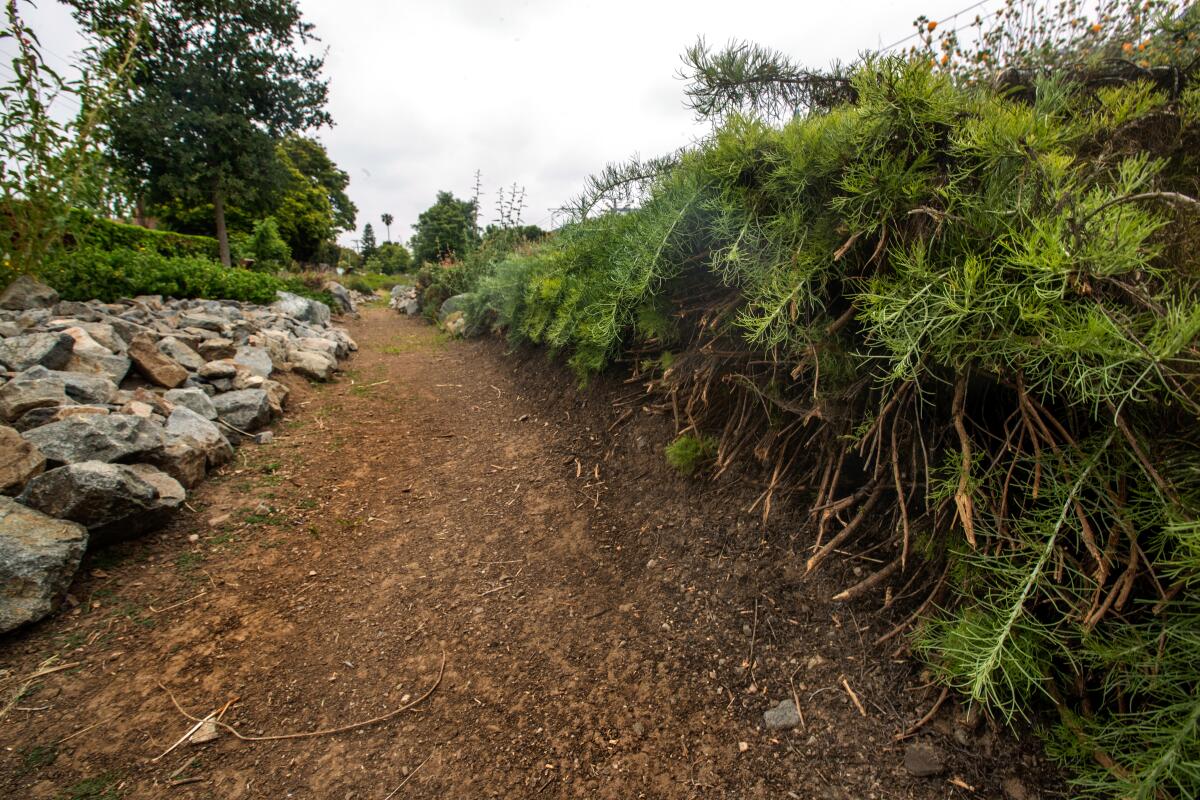
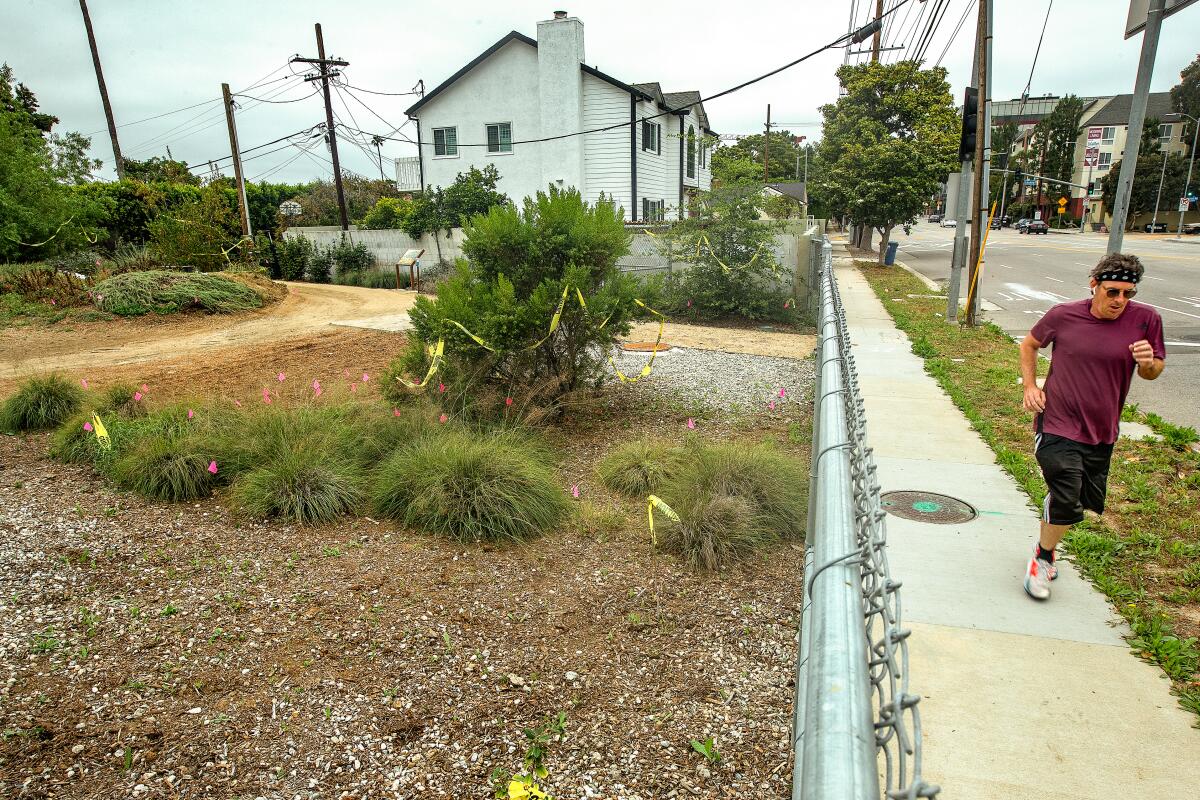
This highlights the reality: Wild areas may be beautiful, but they’re also a problem for the city, which has to worry about liability issues and security for surrounding neighbors. And it does need access to do the maintenance that the site requires, Meisami-Fard said.
“We’re really grateful to the community group who have been volunteering their time tremendously [to keep the site weeded], but native plant vegetation gets really strong root systems that can cause blockage and flooding,” she said. “We want to be a partner with them, and take into account their vision of an urban forest, but if it’s open to the public, we can’t just let it be overgrown. We have to find common ground and we need to work together to carve out that path.”
“You pick your battles,” Mercer said ruefully, looking at the shorn Cleveland sage and shaped-up sagebrush. At least, she said, the remaining plants still provide habitat for local animals, and someday, she has faith the Greenway will be open to humans too.
In the meantime, you can visit the site from 10 a.m. to noon on July 16 for a free formal tour. Enter at the west gate off Westwood Boulevard.
Sign up for our L.A. Times Plants newsletter
At the start of each month, get a roundup of upcoming plant-related activities and events in Southern California, along with links to tips and articles you may have missed.
You may occasionally receive promotional content from the Los Angeles Times.
This month’s events
There are plenty of other plant-related classes and activities this month. (Woolly blue curls ice cream, anyone? See July 9.)
If you have an upcoming event you’d like to include in future calendars, email the information to [email protected] by the third week of the month preceding the event, and we’ll try to include it. Feel free to share this email with friends, and encourage them to subscribe too.
July 6 & 18
“Home Composting — Garden Gold from Kitchen & Garden Waste,” is a free class taught by master gardener Yvonne Savio, creator of the GardeningInLA.net website, at 4 p.m. on July 6 at the Sun Valley Branch of the Los Angeles Public Library, and at 2 p.m. at the library’s Washington Irving Branch Libraryin Arlington Heights. lapl.org
July 6, 13, 20 or 27
Hands-On Fungi Workshop — Take Home Your Own Oyster Mushroom Grow Kit, free short workshops by Metabolic Studio offered every Thursday between 3 and 6:30 p.m. at the L.A. River Farmer’s Market at Los Angeles State Historic Park in Chinatown. Advance registration is recommended to ensure adequate materials. eventbrite.com
July 8
Understanding Oaks: A Tree Walk and Talk with arborist Alison Lancaster, 9-11 a.m. at the Theodore Payne Foundation in Sun Valley. Lancaster will visit oaks on the foundation’s grounds and discuss the trees’ life cycle, non-harmful native insects versus destructive invasive pests that damage oaks, pruning, watering and diseases. Register online, $35 ($25 members). eventbrite.com
Ask an Arborist: A Native Tree Walk with Alison Lancaster, 1-3 p.m. at the Theodore Payne Foundation in Sun Valley. Lancaster will lead a walk-and-talk around the foundation’s grounds to identify a variety of native trees and provide information about their care. Participants are encouraged to bring photos and questions about trees they want to identify. Register online $35 ($25 members). eventbrite.com
July 9
Flower Hour: Freeze Wild is a kind of happy hour fundraiser from 5 to 8 p.m. for the California Botanic Garden in Claremont, featuring three new frozen treats flavored by California native plants created by Bert & Rocky’s Ice Cream. For happy hour purists, alcoholic drinks also will be available for purchase. The $30 tickets ($20 for members and children ages 3-12) include one scoop of each flavor. calbg.org
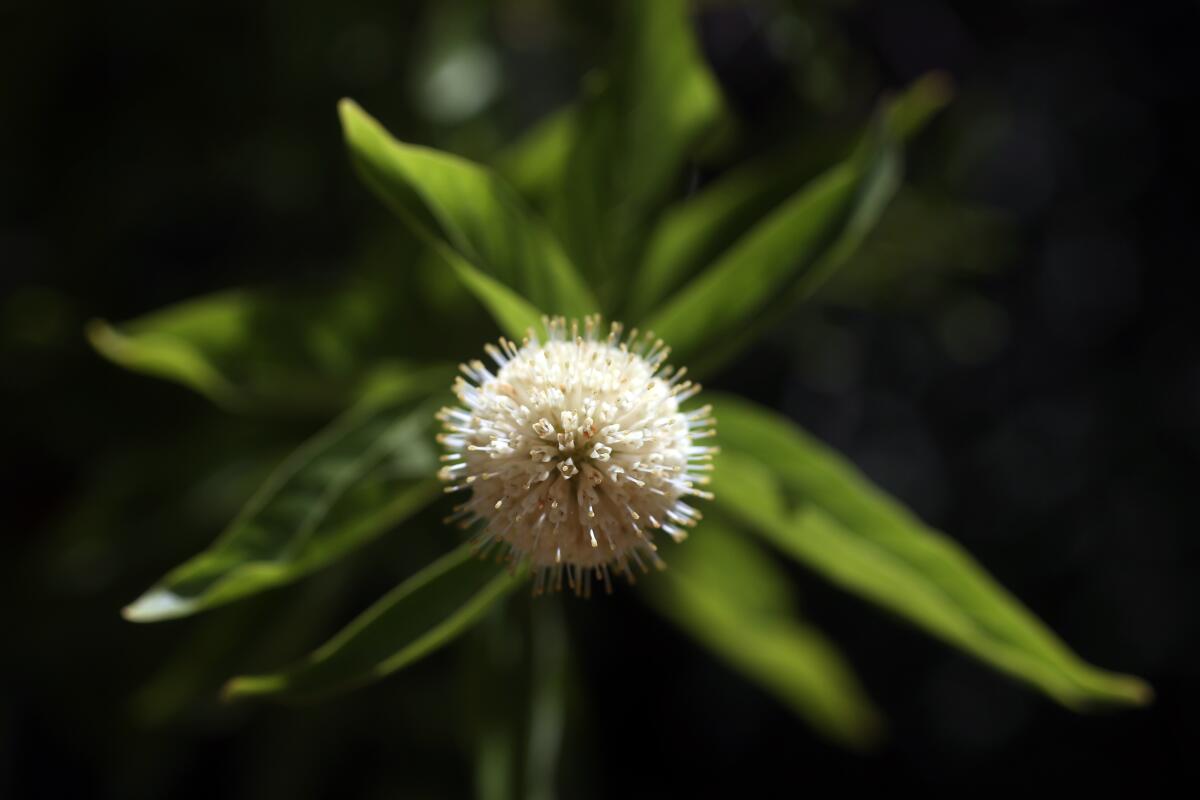
“Aloe Hybrids,” a talk by aloe hybridizer Kelly Griffin, plant development manager of Altman Plants, during the monthly meeting of the South Coast Cactus & Succulent Society, 1 p.m. at the South Coast Botanic Garden in Rolling Hills Estates. Admission is free. southcoastcss.org
July 13
“Growing WaterWise at California Botanic Garden: Getting Started, Lawn Removal and More!” Botanist Lucinda Wade, the garden’s executive director, details how to get ready for the fall native planting season by removing all or part of your lawn, 6:30 to 8 p.m. in Claremont. Tickets are $20 ($15 for members) and advance registration is required. calbg.org
Invasive Plant Foraging Hike, 6 to 7:30 p.m., is an easy, one-hour hike around Griffith Park led by certified California naturalist and environmental educator Jason “journeyman” Wise, to identify non-native and invasive edible plants growing in the hills around Los Angeles, along with tips about how to eat them. Tickets are $25. eventbrite.com
July 15
“Reimagining Gardens: A Garden Tour in Altadena, Pasadena and La Cañada” 8:30 a.m. to 1 p.m., is a workshop tour led by Shawn Maestretti of Studio Petrichor, a landscape-design firm specializing in native plants, to see how their “whole system garden” approach uses water harvesting and changes during the summer dry months when many native plants go dormant. The $50 tickets include a plant-based lunch at the final garden in Altadena. studio-petrichor.com
July 15-16
Sherman Library & Gardens Plant-O-Rama Plant Sale, 10:30 a.m. to 4 p.m. in Corona del Mar, features plants for sale and expert advice from several botanic organizations Admission is free with a $5 ticket to the garden (members and children 3 and under enter free). thesherman.org
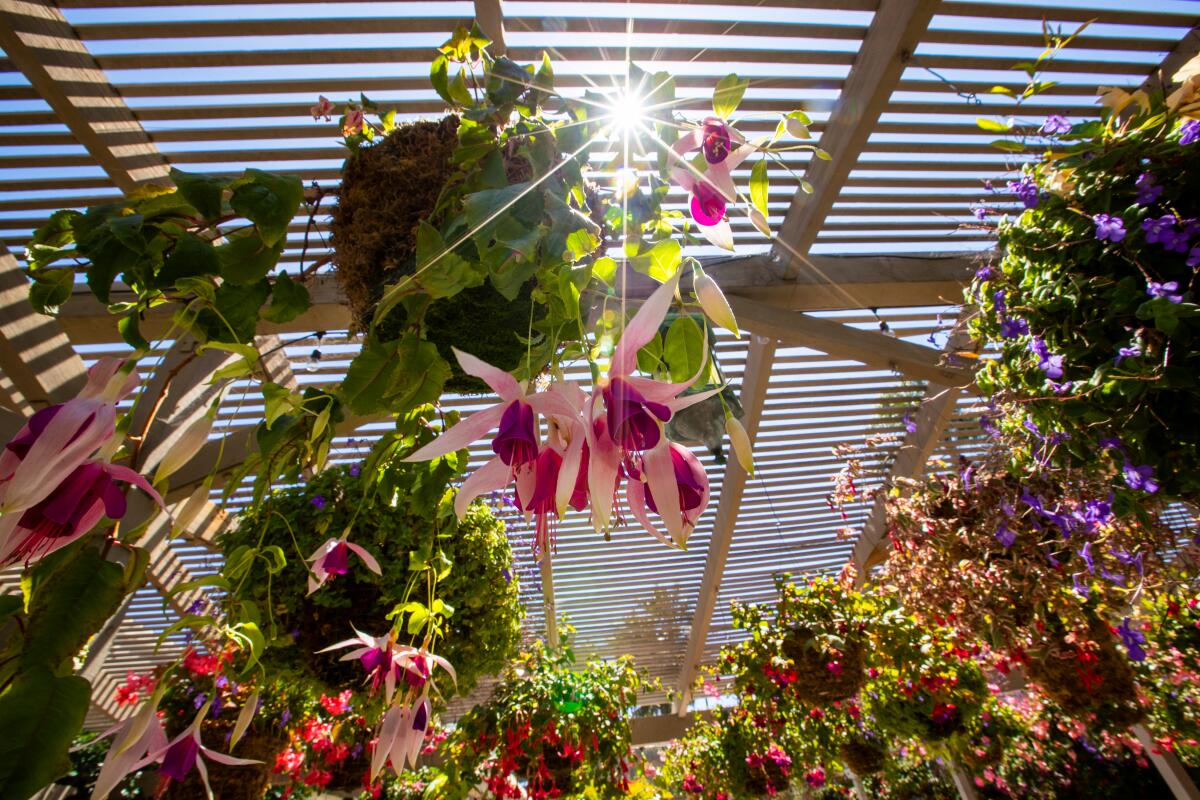
July 15 & 22
Smart Gardening for advanced gardeners, two free workshops by L.A. County Public Works’ Smart Gardening program explain the fundamental principles of drought-tolerant landscaping, integrated pest management and organic gardening on July 15 at the Walnut Senior Center from 11:30 a.m. 1 p.m. and on July 22 in Santa Clarita at the Valencia Library from 10 to 11:30 a.m. pw.lacounty.gov
July 17
The Reverence Project Volunteer Days are monthly events where volunteers help with projects at the Survivors Healing Garden for survivors of violent crime in Watts from 10 a.m. to 1 p.m. instagram.com/thereverenceproject
July 19
Comprehensive Irrigation for California Native Plants, 9 a.m. to noon at the Theodore Payne Foundation in Sun Valley. Horticulture Director Tim Becker describes how, when and why to irrigate California native plants in landscapes using various systems and techniques, first in a classroom and then in a field walk. Register online for $65 ($55 for members). eventbrite.com
July 21
Monarchs & Milkweed, a class for adults and children, 10 a.m. to noon at the Theodore Payne Foundation in Sun Valley. The class, taught by volunteer engagement coordinator Rachel Bailey, describes the life cycle of Western monarch butterflies followed by a search for caterpillars on the foundation’s grounds and a chance to plant milkweed seeds in a pot of peat that participants can take home. Register online, $35 ($25 members, children 8 and under enter free but must be registered). eventbrite.com
July 23
Beekeeping workshop, 10:30 a.m. to 12:30 p.m. in Malibu, taught by certified master beekeeper Phoebe Piper, owner of the Hive Tribe beekeeping service, includes an overview of bee biology and then the donning of bee suits to open up a hive to learn about its components. Participants may hold a frame of bees for photos. Tickets are $85. Participants should bring water and wear unscented sunscreen, long pants and closed-toe shoes (preferably boots) and avoid wearing strong scents. usalproject.com
July 27
Queer Ecology Sunset Hike, 6-8 p.m., in Griffith Park is a free hike led by certified California naturalist and environmental educator Jason “Journeyman” Wise, who discusses how human society defines the natural world within its own cultural expectations and how nature regularly subverts those expectations with, for example, same-sex relationships among animals, plants that have both male and female parts, and the transitioning of animals, insects and plants from one sex to another. Pre-registration is required. eventbrite.com
Consider subscribing to the Los Angeles Times
Your support helps us deliver the news that matters most. Become a subscriber.
July 29
Soil for All: An L.A. Compost Distribution Event provides free, locally produced compost you can sift from 10 a.m. to noon at the Grow Good Urban Farm in Bell, along with composting tips and information about the importance of diverting organic waste from landfills. Participants must bring their own containers and register in advance for the free compost. lacompost.org
Smart Gardening for Beginners, a free workshop by L.A. County Public Works’ Smart Gardening program, 10 to 11:30 a.m. at the Culver City Veterans Memorial Complex, outlines basic techniques in backyard composting, worm composting, water-wise gardening, grass-cycling and edible gardening. Compost bins will be available for purchase at a discounted cost. pw.lacounty.gov
Full Moon Hike with lessons about nighttime flora and fauna, 7 to 9 p.m. at Griffith Park, led by Jason “Journeyman” Wise, who will describe the relationship between native plants and nocturnal animals. Register online, $30. usalproject.com
What we’re reading
— These bleating firefighters have an insatiable appetite for wildfire fuel — weeds. Goats are helping the Palos Verdes Peninsula Land Conservancy prepare land for habitat restoration.
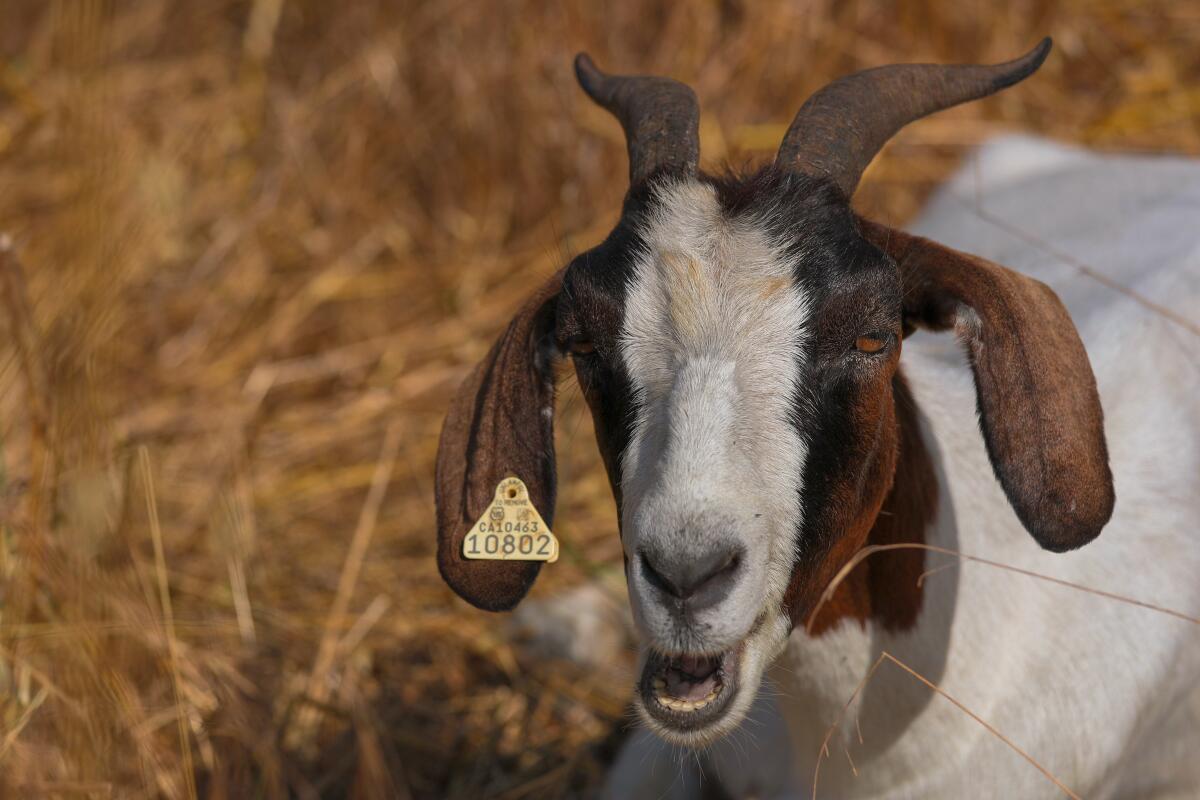
— California artists and chefs find creative ways to confront the destructive ‘superbloom’ of wild mustard. Seemingly everywhere in California this year following an unusually wet winter, wild black mustard is highly flammable — and useful in pursuits from dyeing fabric to making salad.
— Once a junkyard, this L.A. garden is a healing ‘altar’ for survivors of violent crime. In a densely populated Watts neighborhood desperately lacking green space, a garden is designed to facilitate healing and honor loved ones lost to violence.
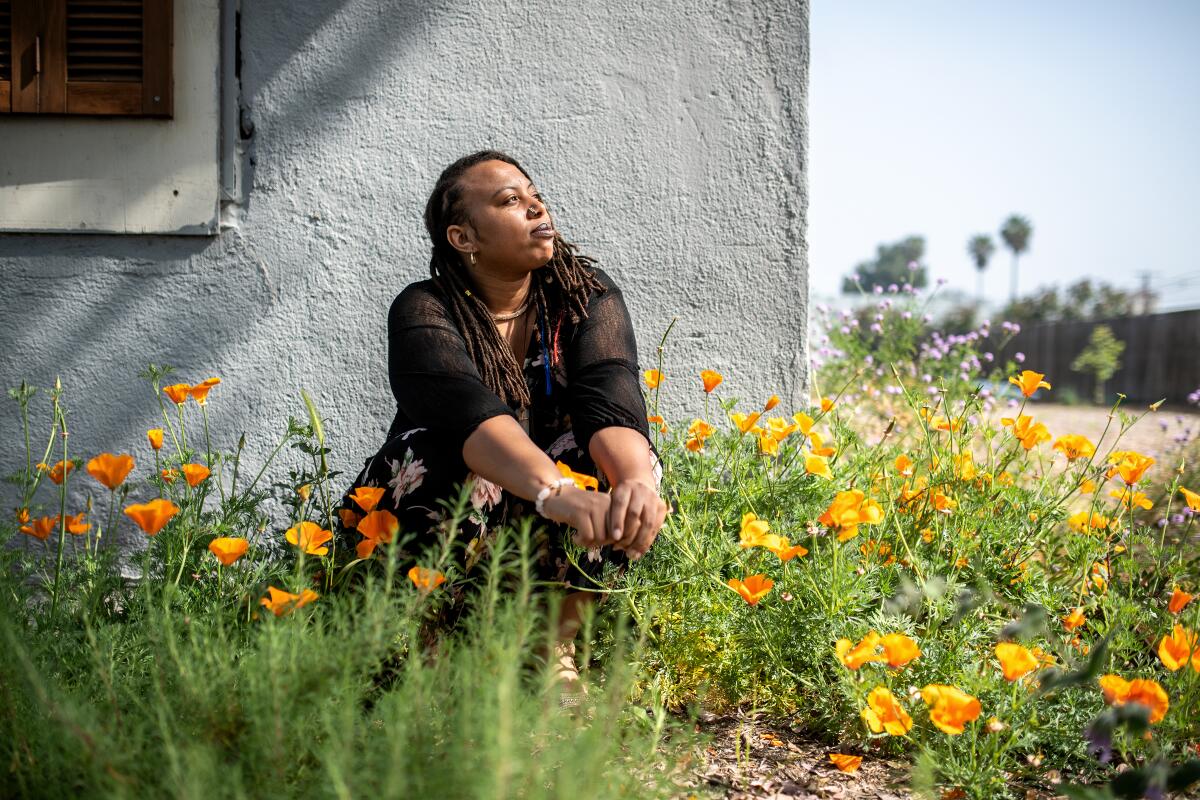
— Saving the next P-22 starts with a million ‘hyperlocal’ seeds and a bare-bones nursery. The Wallis Annenberg Wildlife Crossing over the 101 Freeway won’t open till late 2025, but the work of collecting native seeds and building a nursery to grow them has already begun.
— Flower power and diplomacy: Versailles perfume gardens transport the public back in time. The Versailles gardens were once famed as a symbol of the king’s expeditionary might and helped water-deprived courtiers perfume smelly skin.
— 13 chill L.A. parks for when you want to do absolutely nothing. This lovely ode to loafing is lush with philosophy and plant experiences.
Sign up for The Wild
We’ll help you find the best places to hike, bike and run, as well as the perfect silent spots for meditation and yoga.
You may occasionally receive promotional content from the Los Angeles Times.




